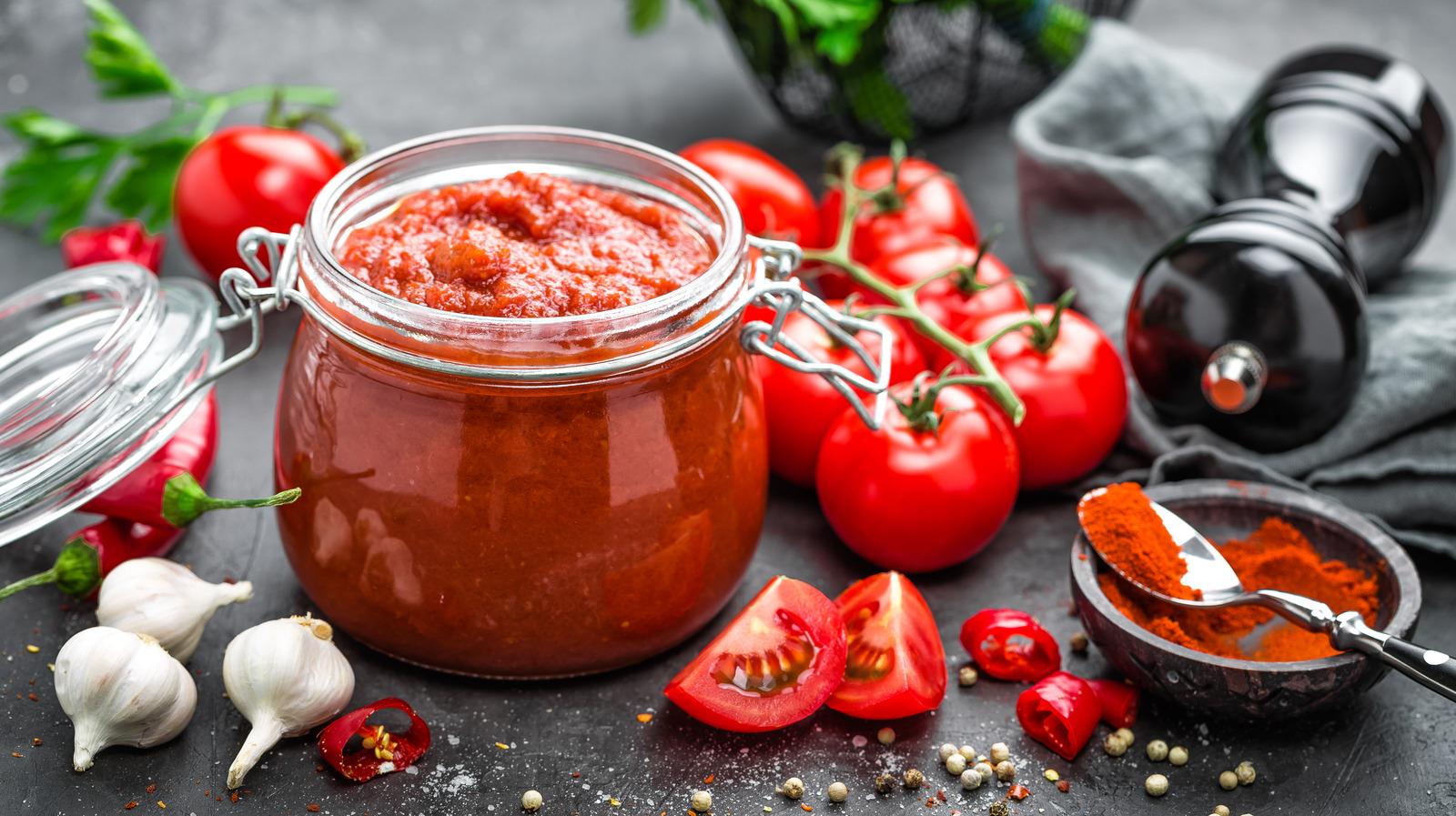Tomato Paste & Puree: Tips, Recipes & Benefits

Tomato paste has long been a staple in kitchens worldwide, but its full potential often goes unnoticed. Rich in flavor and packed with nutrients, it serves as a versatile ingredient that elevates countless dishes, from savory stews to delicate sauces. Understanding the difference between tomato paste and tomato puree, and learning the best ways to use them, can transform your cooking.
What is Tomato Paste?
Tomato paste is a concentrated form of tomatoes, created by cooking down tomatoes to remove most of their water content. The result is a thick, intensely flavored product that adds depth and richness to recipes. Unlike fresh tomatoes, tomato paste delivers a robust taste that can enhance both simple and complex dishes without overpowering them.
Tomato Puree vs Tomato Paste: Understanding the Difference
Although often used interchangeably in recipes, tomato paste and tomato puree are not the same. Tomato puree is smoother and less concentrated than paste, providing a lighter tomato flavor and a more liquid consistency. This makes puree ideal for recipes where a delicate tomato taste is desired, such as soups or pasta sauces.
On the other hand, tomato paste is dense and rich, designed to add depth and umami. For chefs and home cooks alike, knowing when to use puree versus paste can significantly impact the final dish. In fact, tomato puree can sometimes substitute tomato paste in recipes if cooked down for longer, but the result will differ slightly in intensity.
Nutritional Benefits of Tomato Paste
Tomato paste is more than just a flavor enhancer it offers impressive nutritional benefits. Packed with vitamins A, C, and K, as well as minerals like iron and potassium, it contributes to a balanced diet. Additionally, the high concentration of lycopene, a powerful antioxidant, can support heart health and may help reduce the risk of certain cancers. Cooking tomatoes into paste actually increases the bioavailability of lycopene, making it even more beneficial than raw tomatoes in some ways.
For those seeking to improve their diet without sacrificing flavor, incorporating tomato paste or tomato puree into everyday cooking is an easy solution.
Cooking with Tomato Paste: Tips and Techniques
Using tomato paste effectively requires understanding how to unlock its flavor. Simply adding it directly to a dish may result in a slightly bitter taste. To enhance its natural sweetness, try cooking it in a small amount of oil before adding other ingredients. This technique, known as "blooming," caramelizes the sugars in the paste, producing a rich, savory depth that cannot be achieved by using raw paste alone.
Additionally, tomato paste can serve as a base for many sauces and soups. Combining it with stock, herbs, and spices creates a hearty foundation that can be customized according to taste. Remember, small amounts can have a big impact tomato paste is potent, and a little goes a long way.
Creative Recipes Using Tomato Paste and Tomato Puree
Homemade Marinara Sauce
Transforming tomato puree into a delicious homemade marinara is simple. Start by sautéing garlic and onions, then add tomato puree, a pinch of sugar, and your favorite herbs. Simmer for at least 20 minutes to allow flavors to meld. This fresh sauce surpasses most store-bought options and provides a healthy alternative free from preservatives.
Rich Beef Stews
Adding tomato paste to a beef stew enhances its richness. Brown the meat, sauté vegetables, and stir in a small amount of paste to build a deep, savory base. The paste intensifies the flavors without the need for extra salt, making the stew both tasty and heart-friendly.
Pizza Sauce from Scratch
Pizza lovers can skip the jarred options by using tomato puree as a base. Combine puree with olive oil, garlic, oregano, and basil for a simple yet flavorful pizza sauce. Tomato paste can also be added for an extra layer of depth, giving homemade pizzas a restaurant-quality taste.
Storage and Shelf Life
Proper storage ensures that tomato paste maintains its quality over time. Unopened cans or tubes can last for months in a cool, dry pantry. Once opened, transferring paste to an airtight container and refrigerating it will extend its usability for up to a week. For longer storage, freezing portions in ice cube trays is an excellent option, allowing you to have convenient, pre-measured amounts ready for recipes.
Tomato puree shares similar storage guidelines, but its higher water content may result in a shorter shelf life once opened. Always check for signs of spoilage, such as mold or an off odor, before using either product.
Healthier Alternatives and Substitutions
For those seeking a lighter option, tomato puree can replace tomato paste in many recipes. The key is to simmer the puree longer to reduce excess liquid and intensify flavor. Canned crushed tomatoes can also serve as a substitute, though adjustments in cooking time may be needed to achieve the desired consistency.
Understanding these alternatives not only expands culinary possibilities but also allows for flexibility in dietary preferences and ingredient availability.
Conclusion
Tomato paste and tomato puree are indispensable ingredients that bring depth, flavor, and nutrition to countless dishes. Recognizing the subtle differences between the two, mastering cooking techniques, and experimenting with creative recipes can elevate your culinary game.
By incorporating these versatile tomato products into your kitchen, you can enjoy richer stews, more flavorful sauces, and a variety of other dishes, all while boosting nutritional value. Whether you’re a seasoned chef or a home cook looking to explore new flavors, tomato paste and tomato puree offer endless possibilities for delicious, wholesome meals.
- Creative Multimedia
- Education & Innovation
- Business & Technology
- Sustainability & Ethics
- App & IT Development
- Community & Culture
- Thought Leadership
- Мероприятие
- AI & Robotics
- Craft
- Кинозал
- Fitness
- Free Peck
- Игра
- Tutorial
- Health
- Music
- Networking
- Другое
- Business
- Religion
- Shop
- Sport
- Wellbeing



